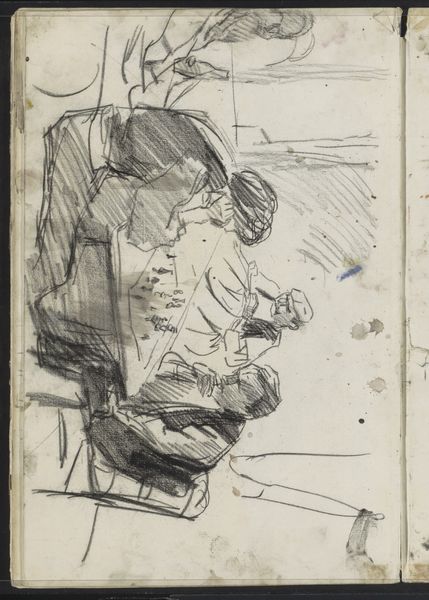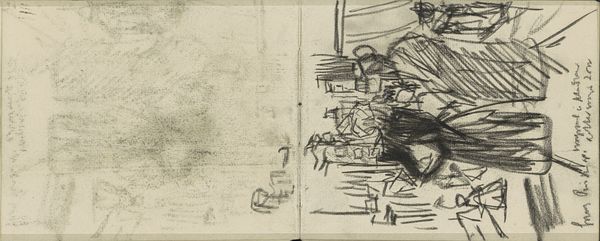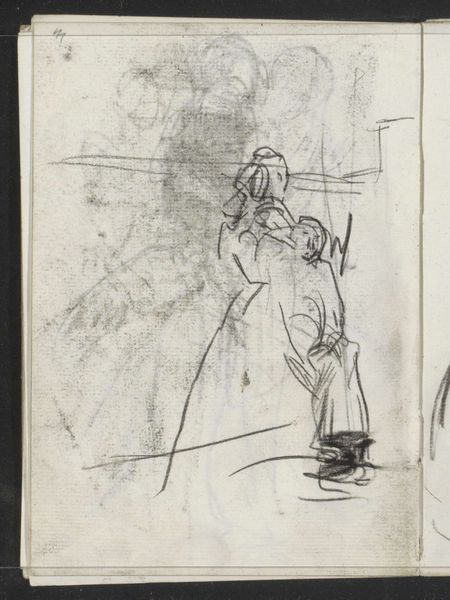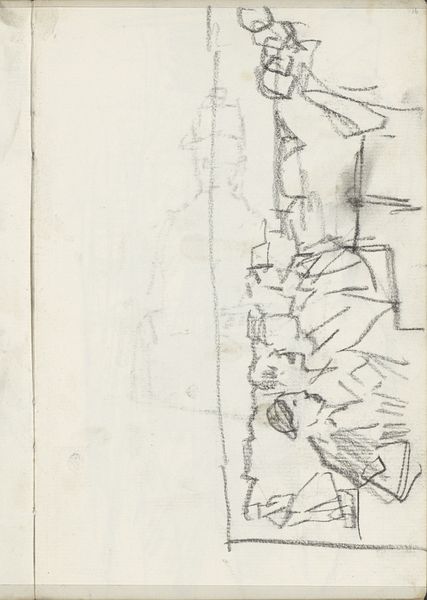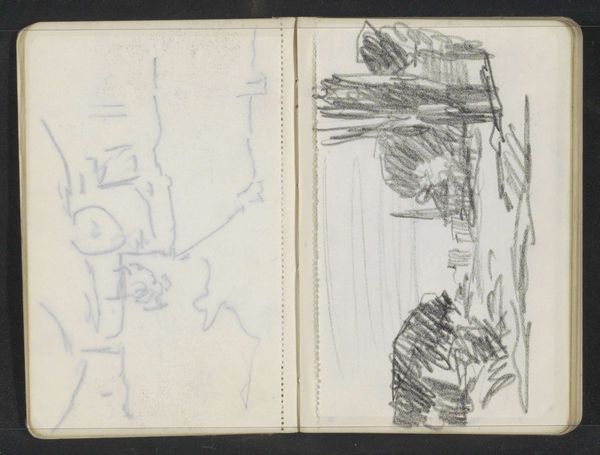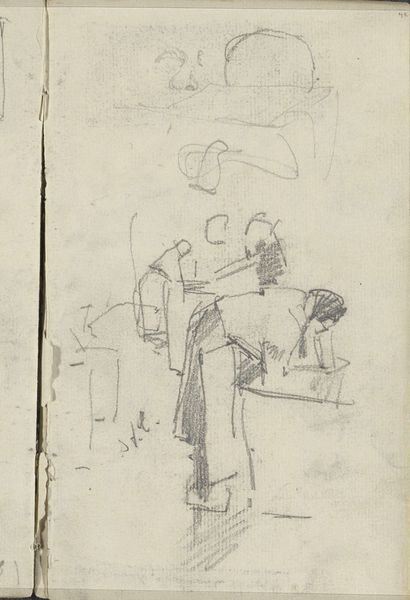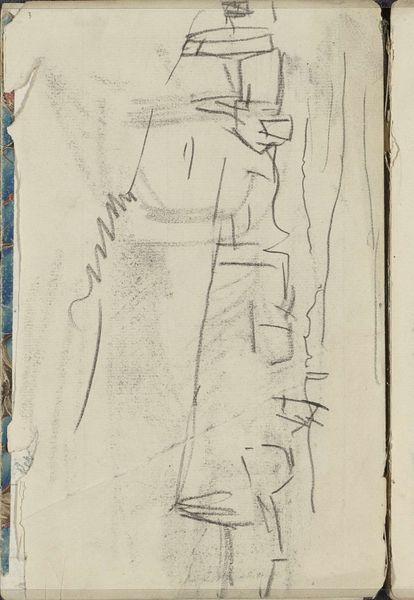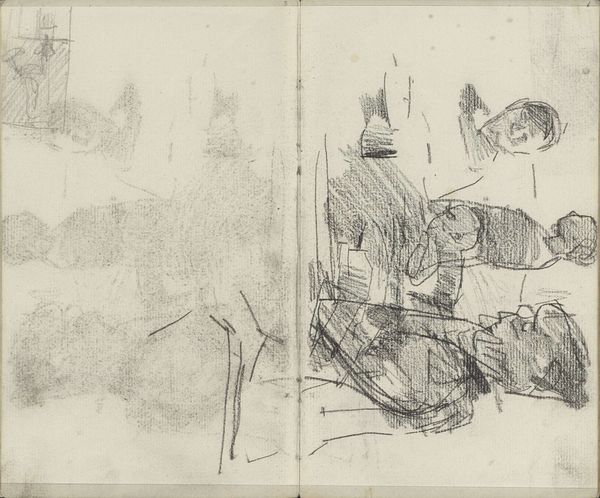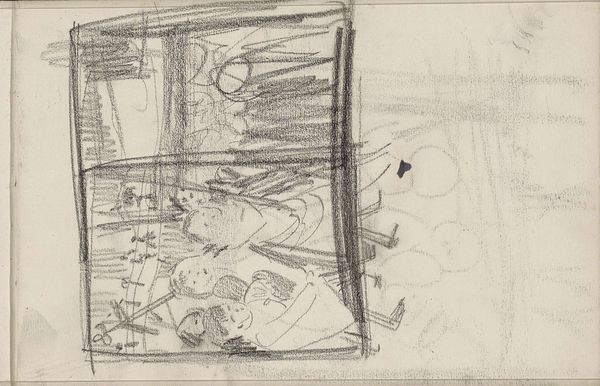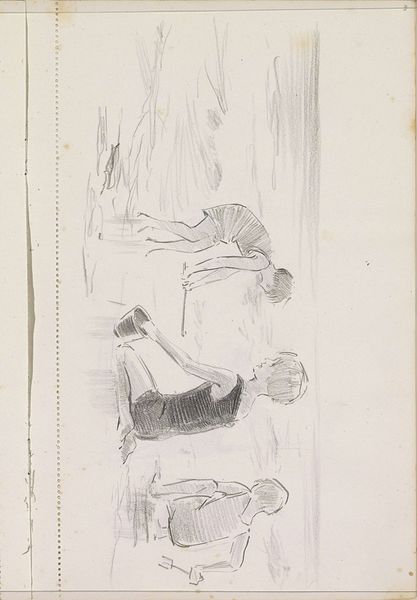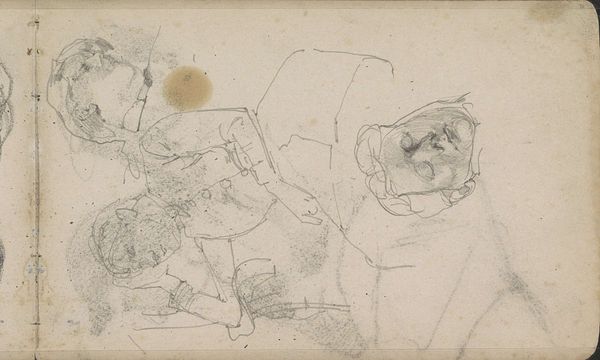
drawing, pencil
#
drawing
#
pen sketch
#
figuration
#
personal sketchbook
#
sketchwork
#
ink drawing experimentation
#
pen-ink sketch
#
pencil
#
pen work
#
sketchbook drawing
#
genre-painting
#
storyboard and sketchbook work
#
sketchbook art
#
initial sketch
Copyright: Rijks Museum: Open Domain
Curator: Here we have Isaac Israels' "Toeschouwers bij zittende figuren, mogelijk dansers" or "Spectators with Seated Figures, Possibly Dancers," a pen and pencil drawing from around 1921 to 1922. It’s currently held here at the Rijksmuseum. Editor: It feels so raw, immediate. Like catching a fleeting moment, but with a certain unease, maybe in the contrasting light and shadow through varied pencil hatching? Curator: Yes, the roughness certainly conveys immediacy. For me, the act of viewing is paramount. Look how Israels positions us, as viewers, observing other viewers who watch the potential dancers. It’s layers of spectatorship, echoing perhaps the role of art itself as a mirror reflecting upon society and performance. Editor: That doubling definitely adds complexity. Beyond the subject matter, consider the composition itself. The diagonal lines create this dynamic push and pull, almost like the scene is teetering on the edge of the page. It subverts our expectations of perspective. Curator: That may point us to the early 20th century sensibilities where notions of fixed perspectives were questioned. But I think what's remarkable is the artist’s capacity to capture a shared moment—the cultural memory of witnessing performance, something almost universal in human societies. Editor: Certainly the perspective gives a fractured or ephemeral feeling like the dancers are right here in this present moment. What seems lasting or memorable may disappear very soon. Look also how the sketch has small bits of pigment along the edge. Curator: A clue, maybe, to other works being created alongside this drawing from his personal sketchbook. This image becomes synecdoche for the broader studio process. Israels seems interested not just in representing a scene, but archiving moments and building a repertoire of symbols of spectators. Editor: Agreed. This piece is a fantastic exploration of those formal devices, pushing the boundaries and asking us to reconsider how we engage with both the artwork and what it represents. The rough application of pigment adds material reality to this viewing experience. Curator: For me, the brilliance lies in that continuous feedback loop it establishes, blurring the boundaries between art and life, the observer and the observed. Editor: Definitely an invitation to reflect upon how we construct meaning through visual perception. Curator: An intriguing journey into the visual representation and perception of spectatorship. Editor: It reveals not just the subject of dancers and audience, but the sheer visual pleasure in mark making.
Comments
No comments
Be the first to comment and join the conversation on the ultimate creative platform.
